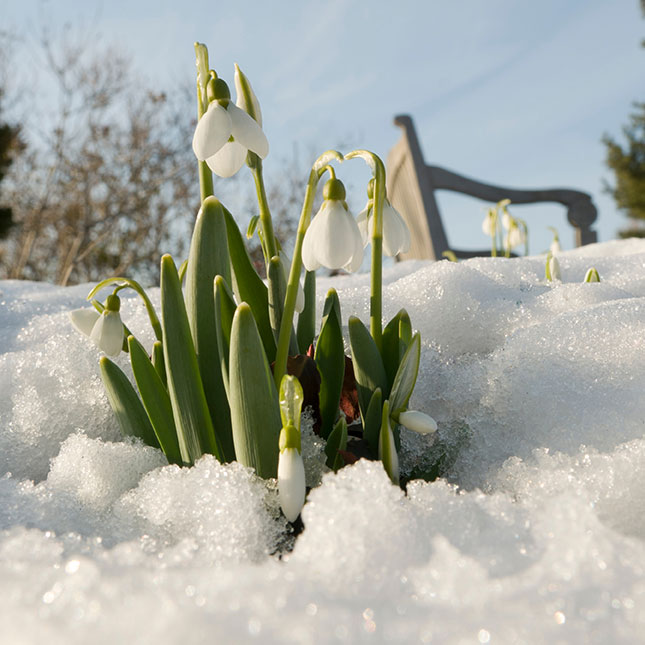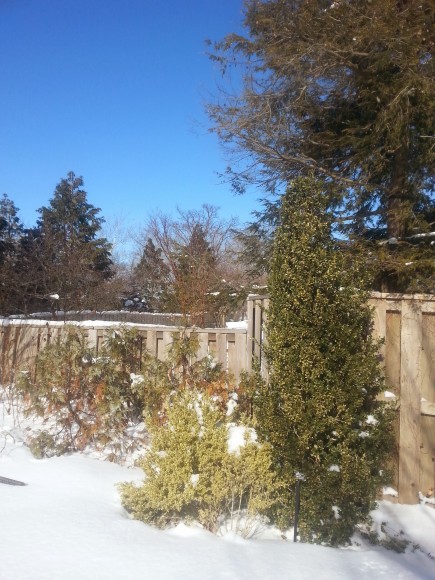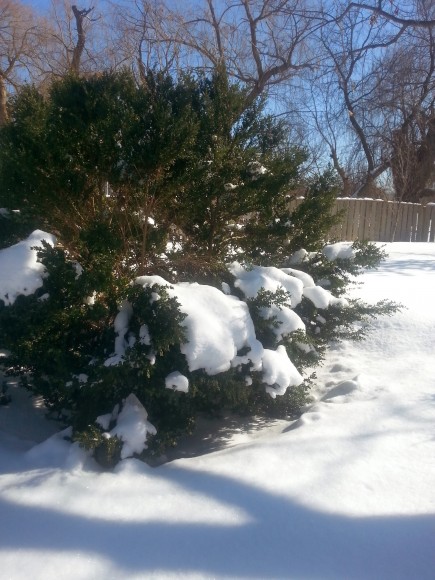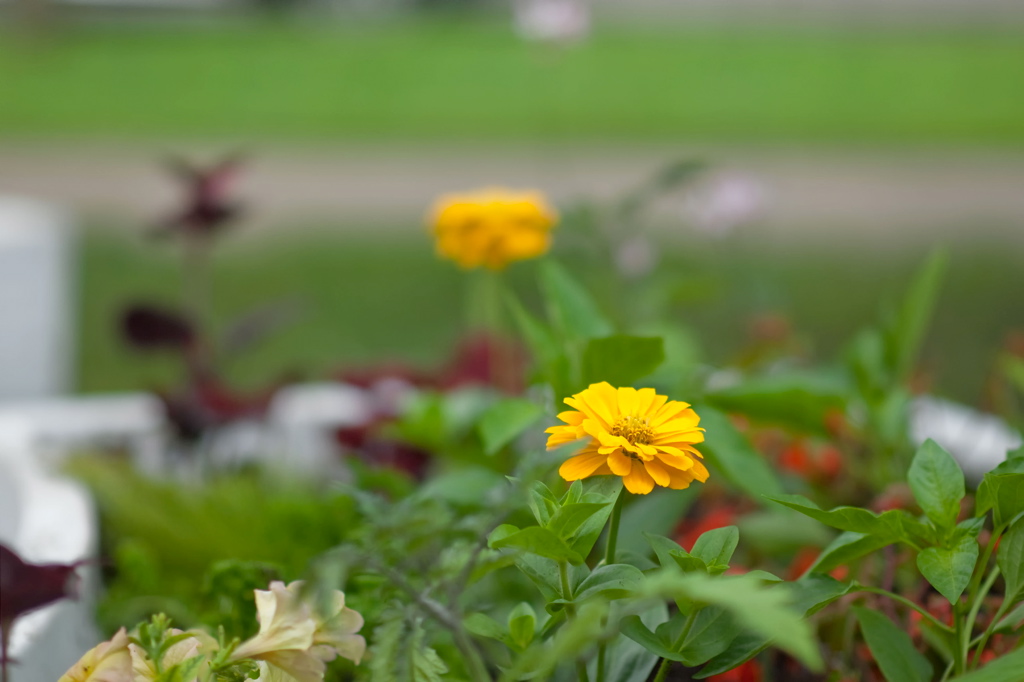Tag: gardening
Let it Snow
If you’ve been around Chicago in the past month, you’ve probably noticed the sort of weather we’ve been having.
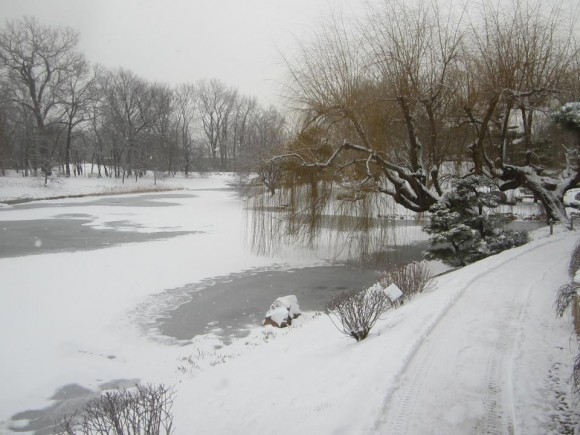
You may even be bitterly cursing the snow and hoping winter will end, cheering this week’s thaw and higher temperatures. What you might not know is that all this snow has a number of benefits that will help your garden and landscape later this spring.

Snow is a great insulator!
As winter presses on, the ground freezes deeper and deeper. This prolonged cold soil can damage roots over time. Snow helps create a blanket that reduces freezing of the soil. Warmer soil keeps microbes more active, which helps break down any plant waste that is in the soil, releasing nutrients. As a result of this insulation, your plants will have a much better start in spring!
Snow brings an important nutrient into the soil: nitrogen.
There are not many ways for nitrogen to enter the soil. While planting legumes and adding fertilizer are the most common ways we add nitrogen to soil, the weather provides nitrogen as well! Nitrogen is abundant in the atmosphere and is most easily collected by falling snow. As the snow melts, it deposits the nitrogen into the ground. (Apple trees and other plants benefit greatly from nitrogen deposited by snow.) When the ground is soft, plowing the snow into the soil will give the greatest benefit. Snow is sometimes called the poor man’s fertilizer.
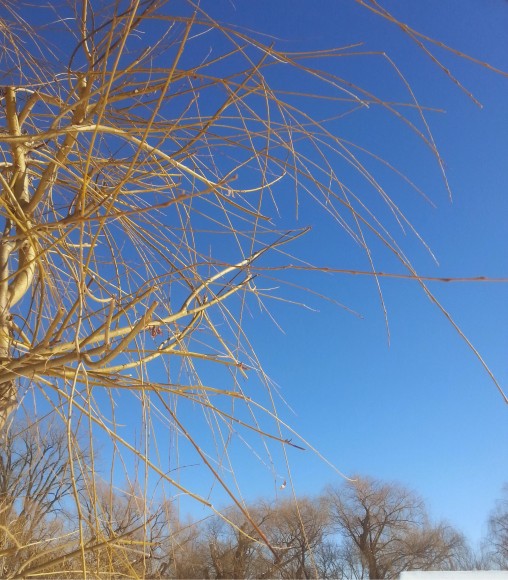
Don’t forget, snow is water!
When snow melts, it provides moisture for evergreen trees and shrubs. This moisture helps keep these plants happy and healthy throughout the winter. You won’t see damage right away, but a few years of snow-free winters can cause health problems in your trees.
Last but not least, snow can be very attractive in a landscape.
Snow makes plants with ornamental fruit, flowers, and bark stand out in the winter landscape. Plants like holly, ornamental grasses, euonymus, crabapples, roses, birches, ghost bramble, striped maple, dogwoods, willows, hazels, winter hazels, and witch hazels are only a few of many very attractive plants for a winter landscape. Dogwoods and willow varieties often will have young growth that is orange, yellow, or red. These same colors appear in the fruit of euonymus, crabapples, roses, and holly. Look for varieties that will complement your landscape.
If you find that snow is weighing down branches in your landscape and disfiguring the appearance of your shrubs or young trees, brush off the snow regularly and prune in the spring to remove any dead or broken branches.
When the snow melts, check your trees and shrubs for damage near the trunk of the plant. Rodents, particularly voles, take advantage of winter snow cover and feed more aggressively on tender bark of young trees. If your lawn has developed paths of dead grass from these garden pests, rake affected areas of the lawn, apply a light application of fertilizer and seed the affected areas if damage is severe.
While many of us are hoping for an end to this winter, this abundance of snow is promising us a great spring!
©2014 Chicago Botanic Garden and my.chicagobotanic.org
Gardening and Autism
Horticultural therapy has proven benefits for individuals with autism.
The integration of horticultural therapy and therapy gardens within health and human service agencies has grown exponentially in recent years. In senior centers, gardening and garden spaces are used to help with fine motor skills, socialization, and ambulatory movement. In veteran’s hospitals, gardening is used for exercise, vocational training, and education.
There is one population that, in my opinion, receives the most benefit from the incorporation of gardens and horticultural therapy in daily services. That population is found in the organizations, schools, institutions, and training centers that serve individuals on the autism spectrum.
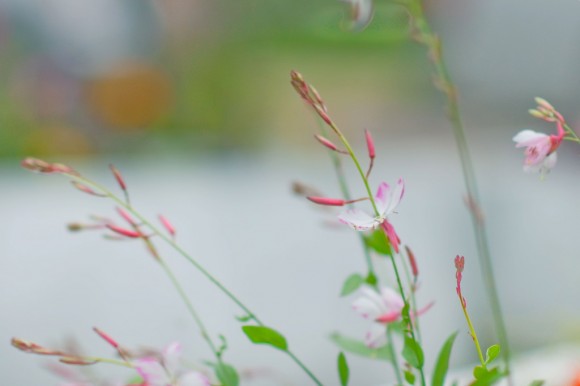
Autism spectrum disorder (ASD) and autism are general terms for a group of complex disorders of brain development. These disorders are characterized by difficulties in social interaction, verbal and nonverbal communication, and repetitive behaviors.
In the spring and summer of 2013, I worked with two organizations and schools and led weekly horticultural therapy sessions in their outdoor gardens. We observed many benefits when engaging both children and adults on the autism spectrum. For today, I’ll discuss three primary benefits I observed: quiet fascination and stimuli reduction, the ability to follow direction, and tactile sensory integration.
The first benefit has to do with the physical garden space itself. I observed a sense of relief displayed by the participants when in the garden space. Gardens can serve as a welcome break from the classroom or facility environment, for clients and staff, and provide a space for “quiet fascination.”
Kaplan, Kaplan, and Ryan state that quiet fascination can “come from the setting itself, from the sound patterns, the motion, the intensity of forms and color” (69). An evaluation was designed at the beginning of the season and results demonstrated that 72 percent of participants were observed having slightly to significantly less anxiety when engaging in the garden and with horticultural therapy activities in comparison to other daily tasks.
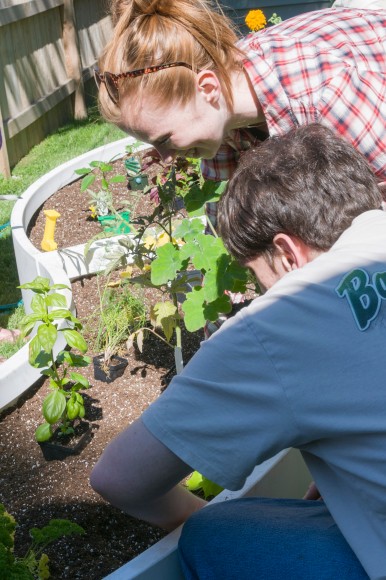
The second benefit was the participant’s ability to follow directions with multiple steps. Individuals with autism spectrum have greater difficulty shifting attention from one task to another or changing routine. During horticultural therapy activities, participants would be asked to follow steps in order to complete the activity. For example, when planting the garden, instructions were to dig a hole, take the plant out of the plastic, place it in the soil, gently push the soil back around the base, and repeat. The hand-over-hand technique was often used to aid in the task and 77 percent of participants were observed being slightly to significantly more responsive to a multiple-step process and able to repeat without instruction.
The last benefit dealt with sensory integration with a focus on the tactile system. When engaging participants in garden activities, dysfunction in the tactile system prompted actions such as withdrawing when being touched or helped, and overall avoidance of getting one’s hands dirty. With assistance from facility staff, we worked with participants to slowly introduce the sensation of soil, plant material, and water to participants. Each week, we’d encourage participants to touch, rub, and smell numerous plants with interesting textures and aromas along with the soil and water. As the weeks went on, it was observed that participants were not only less reserved but also were fascinated with the soil and plants.
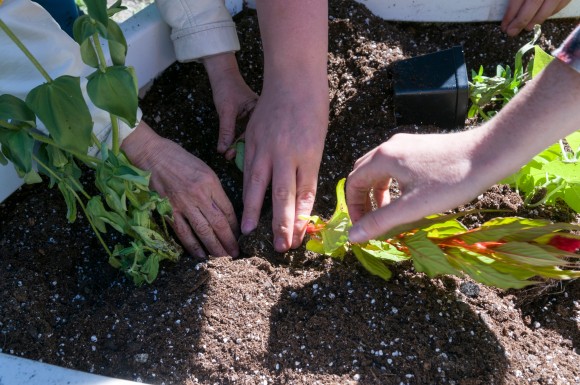
The integration of gardens and garden-based activities in health and human service agencies is expanding year after year. If you know an individual or organization who could benefit from a garden, share some of the information you learned in this blog. It’s often in those conversations, filled with factual evidence and interest, that new ideas are planted and grown.
Source: Rachel, Stephan Kaplan and Robert Ryan. With People in Mind: Design and Management of Everyday Nature. Washington D.C.: Island Press, 1998. Print.
©2014 Chicago Botanic Garden and my.chicagobotanic.org
How To Make A Bee Condo
Native bees are critically important in pollinating our plants. This video provides easy-to-follow instructions on how to build a home for bees in your garden so they can continue to pollinate your plants all season long. This is just one of the many environmentally-friendly gardening practices that you can learn during World Environment Day at the Garden on Saturday, June 4, 2011. Visit www.chicagobotanic.org/wed2011 for more information.
Share your tips for conservation and sustainable living!
Tell us what you do at home to save energy, reduce waste and chemicals and save the natural resources we need for our survival. We’ll post your comments here to give others ideas for what they can do at home for the environment. Then celebrate World Environment Day with us on June 5 for free demonstrations on a variety of topics as well as plant giveaways and plant pot recycling.


